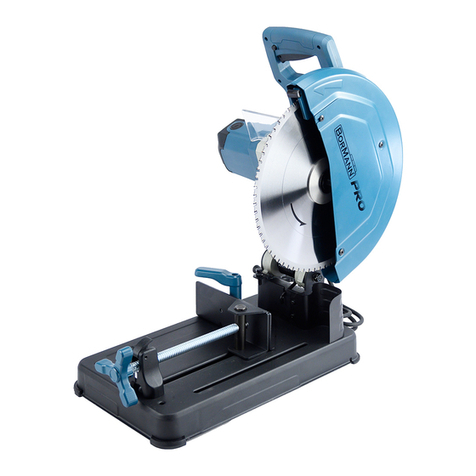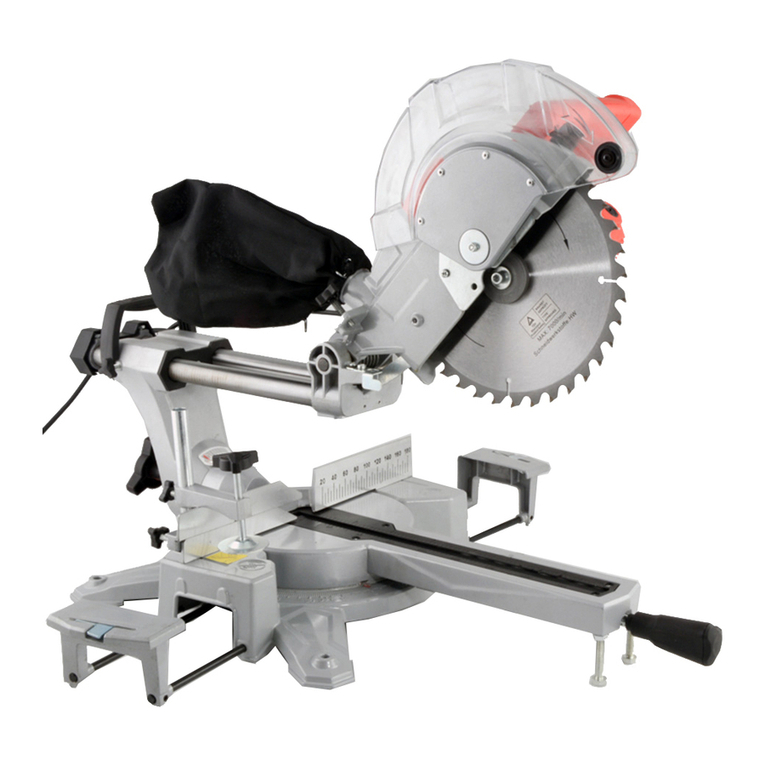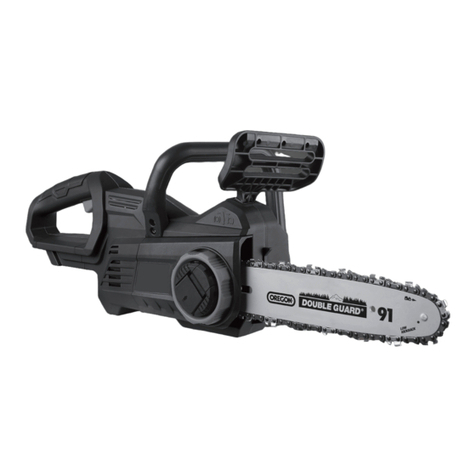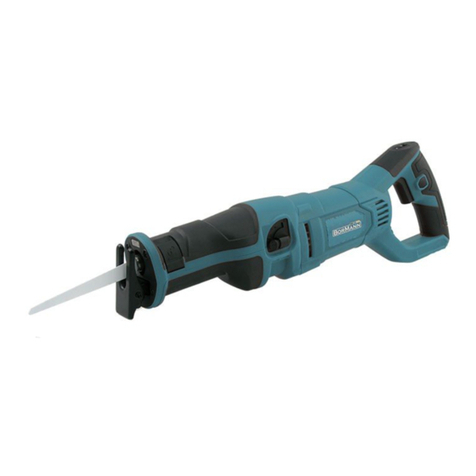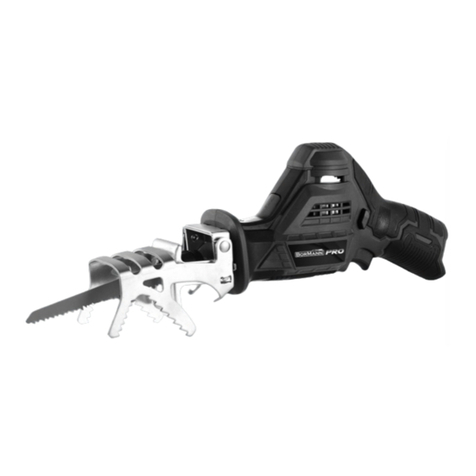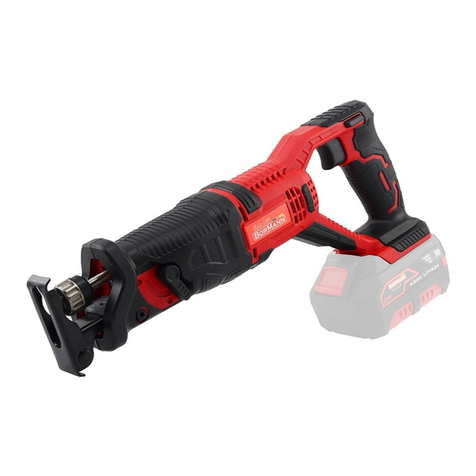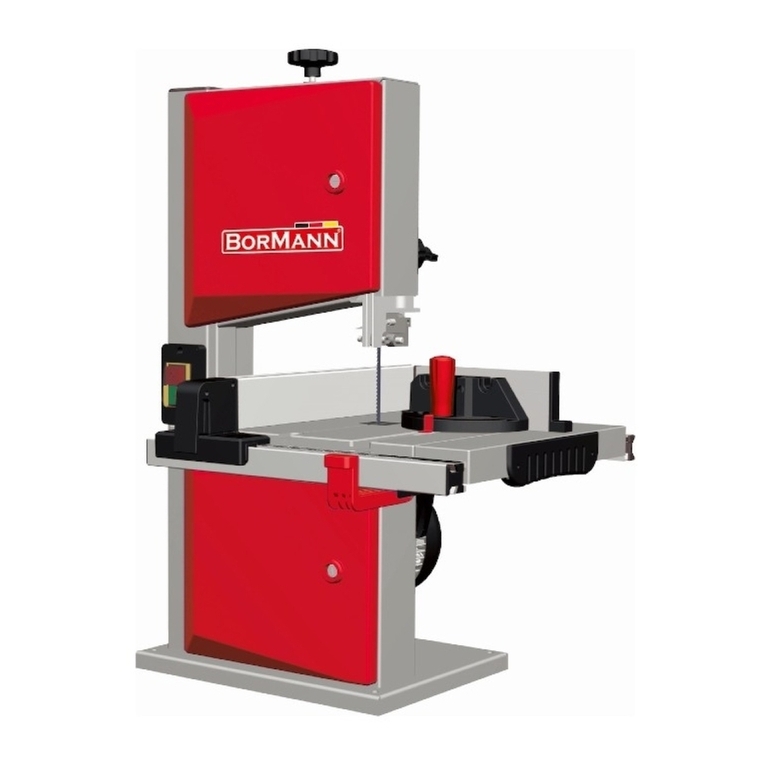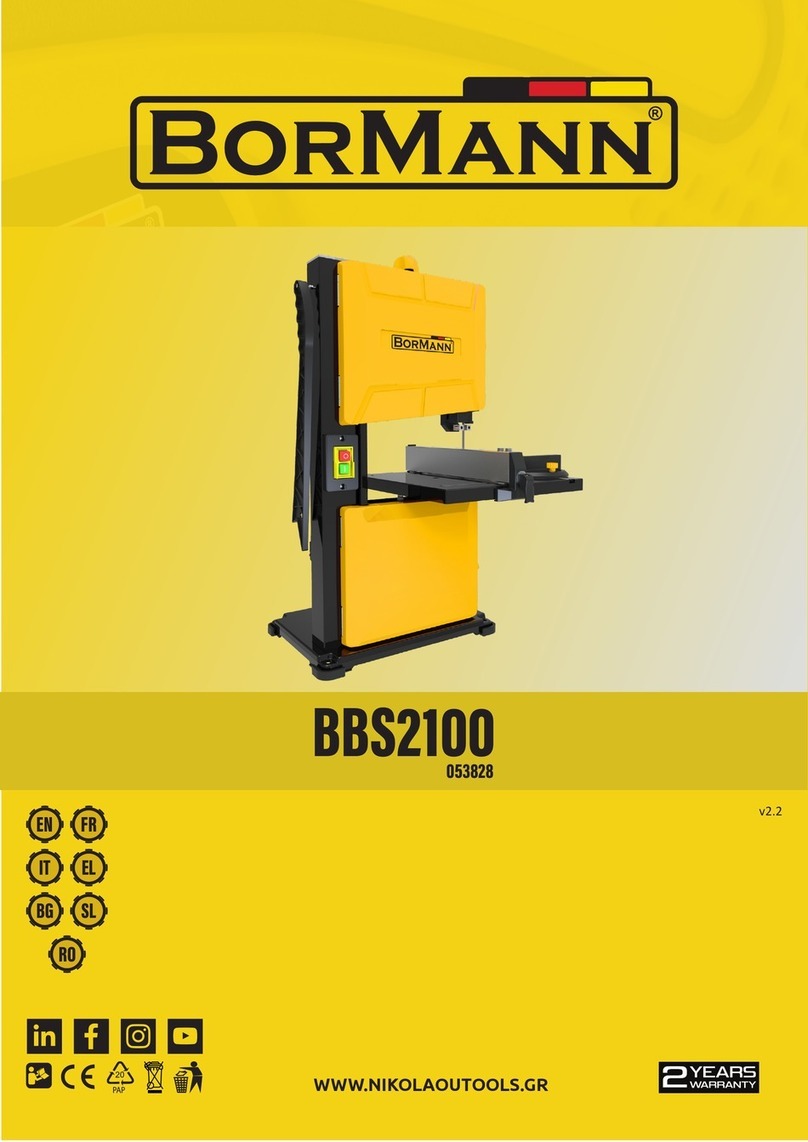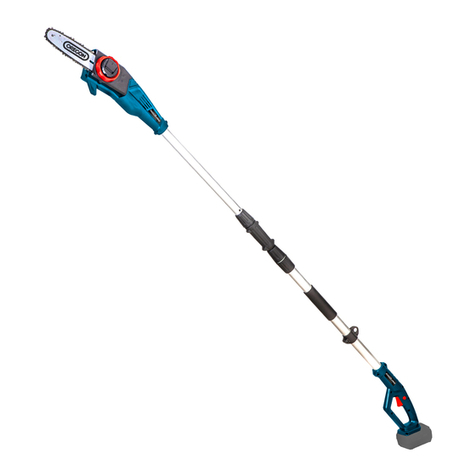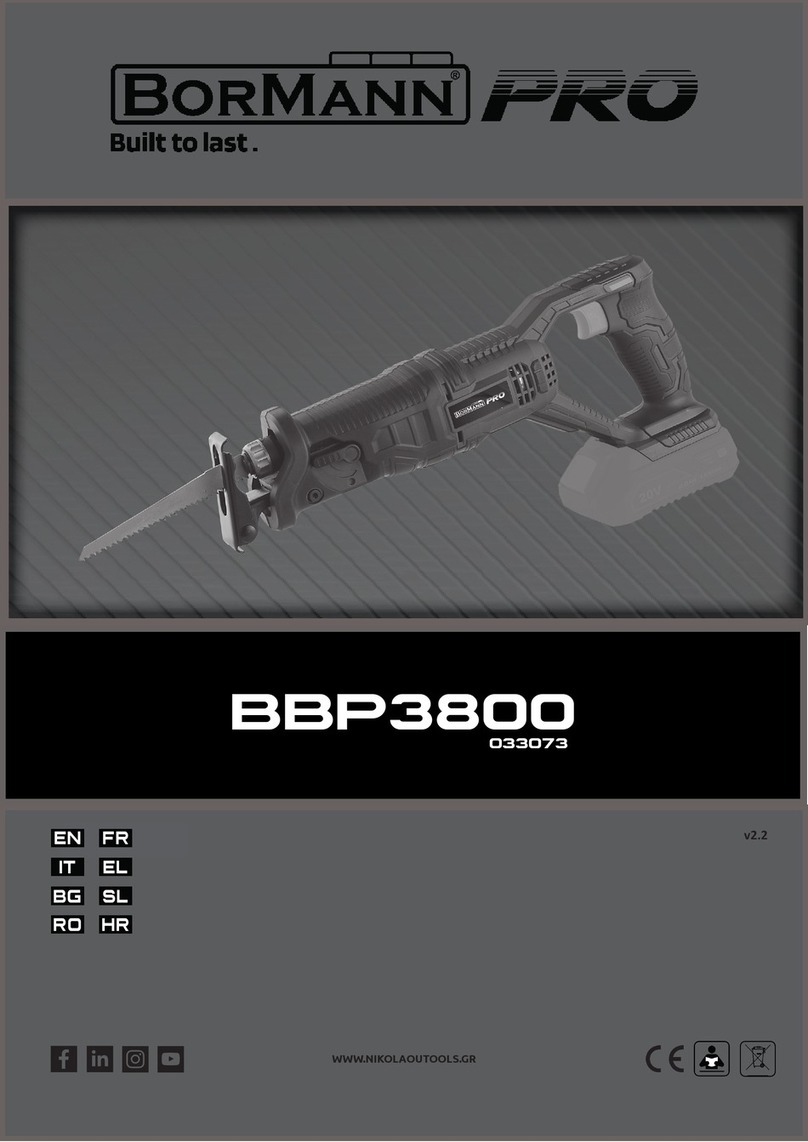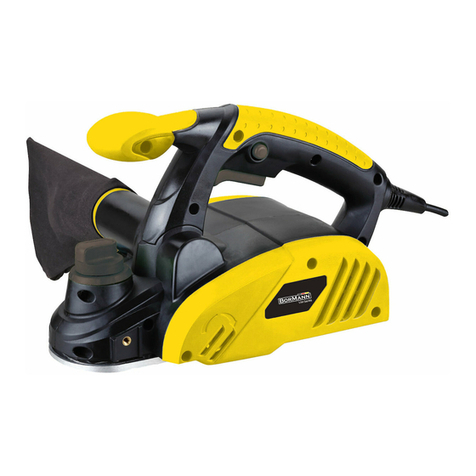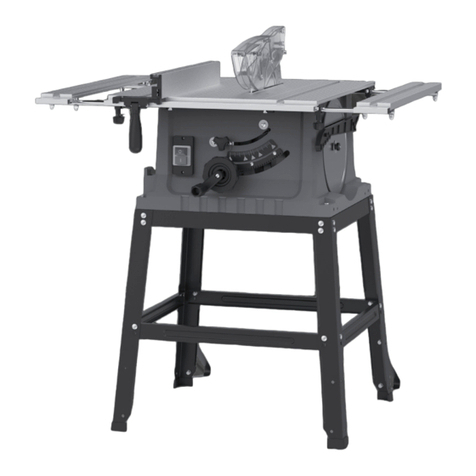
4
A baery short can cause a large current ow, overheang, possible burns and even a breakdown.
6. Do not store the tool and baery cartridge in locaons where the temperature may reach or exceed 50 °C (122 °F).
7. Do not incinerate the baery cartridge even if it is severely damaged or is completely worn out. The baery cartridge can explode in a re.
8. Be careful not to drop or strike baery.
9. Do not use a damaged baery.
10. Lithium-ion baeries are subject to the Dangerous Goods Legislaon requirements.
For commercial transports e.g. by third pares, forwarding agents, special requirement on pack- aging and labelling must be observed. For preparaon of the
item being shipped, consulng an expert for hazardous material is required. Please also observe possibly more detailed naonal regulaons. Tape or mask o
open contacts and pack up the baery in such a manner that it cannot move around in the packaging.
11. Follow your local regulaons relang to disposal of baery.
Important safety instrucons for baery cartridge
WARNING: DO NOT let comfort or familiarity with product (gained from repeated use) replace strict adherence to safety rules for the subject product. MISUSE
or failure to follow the safety rules stated in this instrucon manual may cause serious personal injury.
1. Before using baery cartridge, read all instrucons and cauonary markings on (1) baery charger, (2) baery, and (3) product using baery.
2. Do not disassemble baery cartridge.
3. If operang me has become excessively shorter, stop operang immediately. It may result in a risk of overheang, possible burns and even an explosion.
4. If electrolyte gets into your eyes, rinse them out with clear water and seek medical aenon right away. It may result in loss of your eyesight.
5. Do not short the baery cartridge:
(1) Do not touch the terminals with any conducve material.
(2) Avoid storing baery cartridge in a container with other metal objects such as nails, coins, etc.
(3) Do not expose baery cartridge to water or rain
4. Support large panels to minimise the risk of blade pinching and kickback. Large panels tend to sag under their own weight. Supports must be placed under
the panel on both sides, near the line of cut and near the edge of the panel.
5. Do not use dull or damaged blades. Unsharpened or improperly set blades produce narrow kerf causing excessive fricon, blade binding and kickback.
6. Blade depth and bevel adjusng locking levers must be ght and secure before making the cut. If blade adjustment shis while cung, it may cause binding
and kickback.
7. Use extra cauon when sawing into exisng walls or other blind areas. The protruding blade may cut objects that can cause kickback.
8. ALWAYS hold the tool rmly with both hands. NEVER place your hand, leg or any part of your body under the tool base or behind the saw, especially when
making cross-cuts. If kickback occurs, the saw could easily jump backwards over your hand, leading to serious personal injury.
9. Never force the saw. Push the saw forward at a speed so that the blade cuts without slowing. Forcing the saw can cause uneven cuts, loss of accuracy, and
possible kickback.
Lower guard funcon
1. Check the lower guard for proper closing before each use. Do not operate the saw if the lower guard does not move freely and close instantly. Never clamp
or e the lower guard into the open posion. If the saw is accidentally dropped, the lower guard may be bent. Raise the lower guard with the retracng handle
and make sure it moves freely and does not touch the blade or any other part, in all angles and depths of cut.
2. Check the operaon of the lower guard spring. If the guard and the spring are not operang properly, they must be serviced before use. Lower guard may
operate sluggishly due to damaged parts, gummy deposits, or a build-up of debris.
3. The lower guard may be retracted manually only for special cuts such as “plunge cuts” and “compound cuts”. Raise the lower guard by the retracng handle
and as soon as the blade enters the material, the lower guard must be released. For all other sawing, the lower guard should operate automacally.
4. Always observe that the lower guard is covering the blade before placing the saw down on bench or oor. An unprotected, coasng blade will cause the saw
to walk backwards, cung whatever is in its path. Be aware of the me it takes for the blade to stop aer switch is released.
5. To check lower guard, open lower guard by hand, then release and watch guard closure. Also check to see that retracng handle does not touch tool housing.
Leaving blade exposed is VERY DANGEROUS and can lead to serious personal injury.
Addional safety warnings
1. Use extra cauon when cung damp wood, pressure treated lumber, or wood containing knots. Maintain smooth advancement of tool with- out decrease
in blade speed to avoid overheang the blade ps.
2. Do not aempt to remove cut material when blade is moving. Wait unl blade stops before grasping cut material. Blades coast aer turn o.
3. Avoid cung nails. Inspect for and remove all nails from lumber before cung.
4. Place the wider poron of the saw base on that part of the workpiece which is solidly supported, not on the secon that will fall o when the cut is made. If
the workpiece is short or small, clamp it down. DO NOT TRY TO HOLD SHORT PIECES BY HAND!
5. Before seng the tool down aer compleng a cut, be sure that the guard has closed and the blade has come to a complete stop.
6. Never aempt to saw with the circular saw held upside down in a vise. This is extremely dangerous and can lead to serious accidents.
7. Some material contains chemicals which may be toxic. Take cauon to prevent dust inhalaon and skin contact. Follow material supplier safety data.
8. Do not stop the blades by lateral pressure on the saw blade.
9. Do not use any abrasive wheels.
10. Only use the saw blade with the diameter that is marked on the tool or specied in the manual. Use of an incorrectly sized blade may aect the proper
guarding of the blade or guard operaon which could result in serious personal injury.
11. Keep blade sharp and clean. Gum and wood pitch hardened on blades slows saw and increases potenal for kickback. Keep blade clean by rst removing it
from tool, then cleaning it with gum and pitch remover, hot water or kerosene. Never use gasoline.
12. Wear a dust mask and hearing protecon when use the tool.
13. Always use the saw blade intended for cung the material that you are going to cut.
14. Only use the saw blades that are marked with a speed equal or higher than the speed marked on the tool.
15. (For European countries only) Always use the blade which conforms to EN847-1.
WARNING: KEEP THESE INSTRUCTIONS IN A SAFE PLACE FOR FUTURE REFERENCE.
